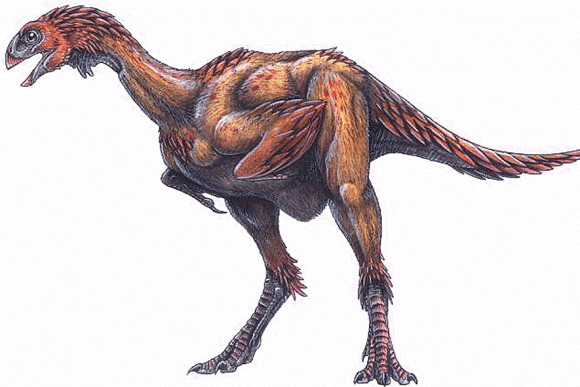Toe Bone Turns Up on the Internet
A rare dinosaur bone, one of only three dinosaur fossils known from the state of South Australia, is going on display at the South Australian Museum some forty-five years after it was lost to science. The opalised bone, representing a single toe bone (phalanx), is believed to come from a type of theropod dinosaur and although named Kakuru kujani, which was officially described from opalised remains representing lower leg bones back in 1980, very little is known about this Cretaceous dinosaur.
The toe bone was found in Andamooka in the far north of South Australia sometime in the early 1970s. It was spotted for sale in an opal shop in Hindley Street, Adelaide by Neville Pledge, the South Australian Museum’s then curator of fossils, in 1973. Neville had the foresight to take several photographs, measurements and plaster casts of the toe bone. However, shortly afterwards, the item was sold and it disappeared from the scientific community.
The Opalised Toe Bone on Display at the South Australian Museum
Picture credit: Ashleigh Glynn
The Tale of a Dinosaur Toe Bone
In April 2018, the bone was spotted up for sale on the internet by Coober Pedy resident Joy Kloester, who purchased the bone and then offered it to the South Australian Museum. The Museum’s Senior Collections Manager for Earth Sciences, Ben McHenry acted quickly to acquire the specimen for the vertebrate palaeontology department.
Mr McHenry commented:
“I couldn’t believe our luck in finding the same bone after forty-five years.”
Dinosaur bones from South Australia are extremely rare. The only two other bones known to science found to date are also part of the vertebrate fossil collection of the South Australian Museum. During the Early Cretaceous period (around 110 million years ago, Albian fauna stage), when dinosaurs roamed the land, most of South Australia was under water, being part of the ancient Eromanga Sea. The sediments deposited on the floor of this ancient sea now form the rocks of the Great Artesian Basin and preserve the abundant remains of marine life that can be viewed in the Museum’s Opal Fossil gallery.
This special dinosaur toe bone will be on display in this gallery from today (December 3rd). Neville Pledge is now an Honorary Researcher at the South Australia Museum, it seems his discovery from 45 years ago, has now joined him at this highly respected institution.
What Sort of Dinosaur was Kakuru kujani?
Kakuru kujani (pronounced: Kah-koo-roo koo-yan-eee), is believed to be about the size of a turkey. Unfortunately, given the limited fossil material, it is not possible to identify its taxonomic position with the Theropoda. K. kujani was described from fragmentary lower leg bones (tibia and possible fibula fragments), the toe bone may not belong to this genus at all, but given the lack of other candidates, the Museum has assigned the bone to Kakuru.
It has been postulated that this dinosaur was an oviraptorid, although some affinity to the Abelisauridae has also been proposed. Its formal classification remains Theropoda incertae sedis, which means it has an uncertain placement within this Suborder.
A Speculative Reconstruction of Kakuru kujani

Picture credit: South Australian Museum
Everything Dinosaur acknowledges the assistance of a press release from the South Australian Museum in the compilation of this article.
Visit the Everything Dinosaur website: Everything Dinosaur.







Leave A Comment